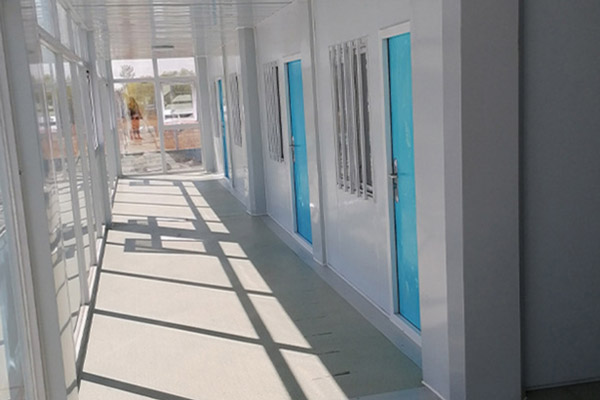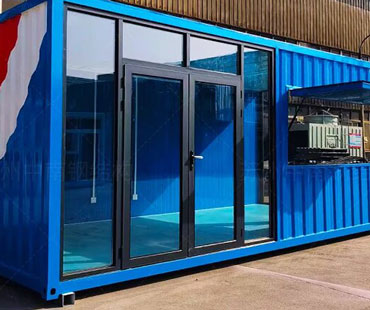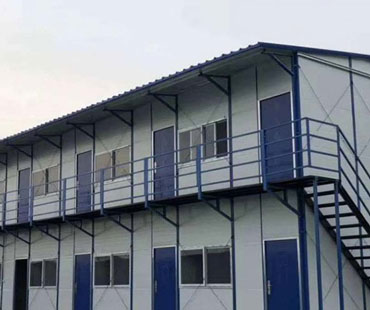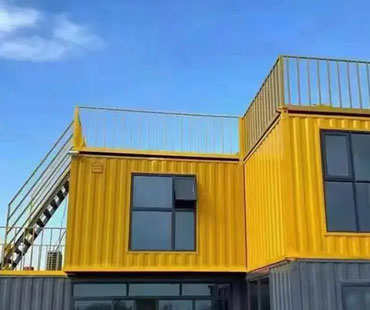In recent years, container houses have emerged as an innovative solution to the growing demand for affordable, flexible, and sustainable housing. These structures, made from repurposed shipping containers, represent a shift in modern architectural practices, blending functionality with creativity.
1. The Rise of Container Housing
The concept of container housing began as a response to the global housing crisis, where traditional construction methods often proved too expensive and time-consuming. By utilizing shipping containers, builders can create homes in a fraction of the time and at a lower cost. This trend has gained traction not only for its affordability but also for its sustainable approach. Repurposing containers helps reduce waste and minimizes the carbon footprint associated with conventional building materials.
2. Design Considerations
Designing a container house involves several key considerations:
-Space Optimization: Shipping containers are typically 20 or 40 feet long, which means designers must maximize the use of limited space. Innovative floor plans and multifunctional furniture are essential to create comfortable living areas.
-Insulation and Climate Control: Containers are made of steel, which can lead to extreme temperatures inside. Proper insulation and ventilation systems are critical for maintaining a livable environment. Many designers incorporate eco-friendly insulation materials and energy-efficient windows to enhance comfort.
-Aesthetic Appeal: While container houses are often seen as utilitarian, architects have begun to explore their aesthetic potential. From sleek modern designs to rustic finishes, the exterior can be customized with paint, cladding, and landscaping to create visually appealing homes.

3. Construction Process
The construction of container houses typically follows these steps:
-Site Preparation: Before any building begins, the site must be assessed and prepared. This includes clearing the land, ensuring proper drainage, and laying a foundation that can support the heavy weight of the containers.
-Container Selection: Choosing the right containers is crucial. Factors such as structural integrity, age, and condition must be considered. Containers can be modified by cutting openings for doors and windows, which requires careful planning to maintain their structural integrity.
-Assembly and Finishing: Once the containers are on-site, they are positioned and secured. Interior finishing involves installing plumbing, electrical systems, and insulation. The final touches include flooring, wall treatments, and kitchen or bathroom installations.
4. Benefits of Container Houses
Container houses offer numerous advantages:
-Affordability: One of the most significant benefits is cost savings. Container homes can be built for a fraction of the price of traditional houses, making homeownership accessible to a broader population.
-Sustainability: By repurposing discarded containers, these homes contribute to reducing waste and promoting a circular economy. Additionally, many container houses incorporate renewable energy sources, such as solar panels, further decreasing their environmental impact.
-Mobility and Flexibility: Container houses can be relocated, offering flexibility for those who may need to move frequently. This characteristic is particularly appealing for temporary housing solutions or mobile offices.
5. Challenges to Consider
Despite their many benefits, there are challenges associated with container housing:
-Zoning and Building Regulations: Many areas have strict zoning laws and building codes that can complicate the approval process for container homes. Understanding local regulations is essential before starting a project.
-Financing: While container homes are often less expensive to build, securing financing can be challenging. Some banks and lenders may be hesitant to finance non-traditional housing structures.
-Durability and Maintenance: While steel containers are durable, they are not impervious to rust and corrosion. Regular maintenance is essential to ensure the longevity of the structure.
6. The Future of Container Housing
The future of container housing looks promising as more people seek innovative solutions to modern living challenges. With advancements in design technology and a growing emphasis on sustainability, container homes are likely to become even more popular. As urban areas continue to grapple with housing shortages, container houses may play a crucial role in providing affordable and efficient living spaces.
Container houses represent a fascinating intersection of design, sustainability, and practicality. As the world continues to evolve, the need for innovative housing solutions will only increase. By embracing the potential of container housing, we can create new spaces that not only meet the demands of modern living but also contribute to a more sustainable future. Whether as permanent residences, temporary shelters, or creative workspaces, container houses are reshaping our understanding of what a home can be.


